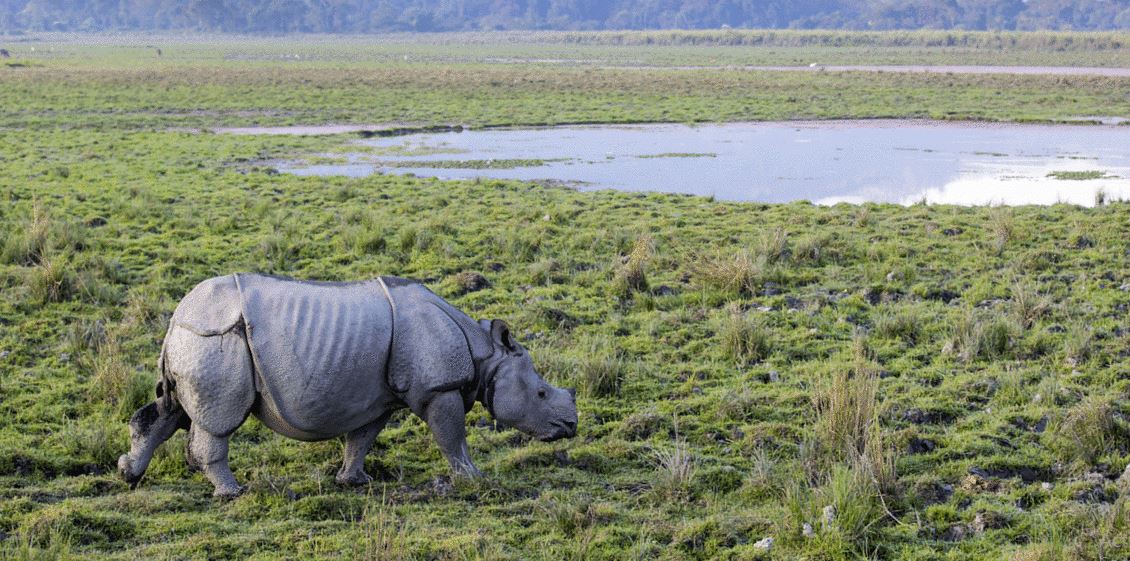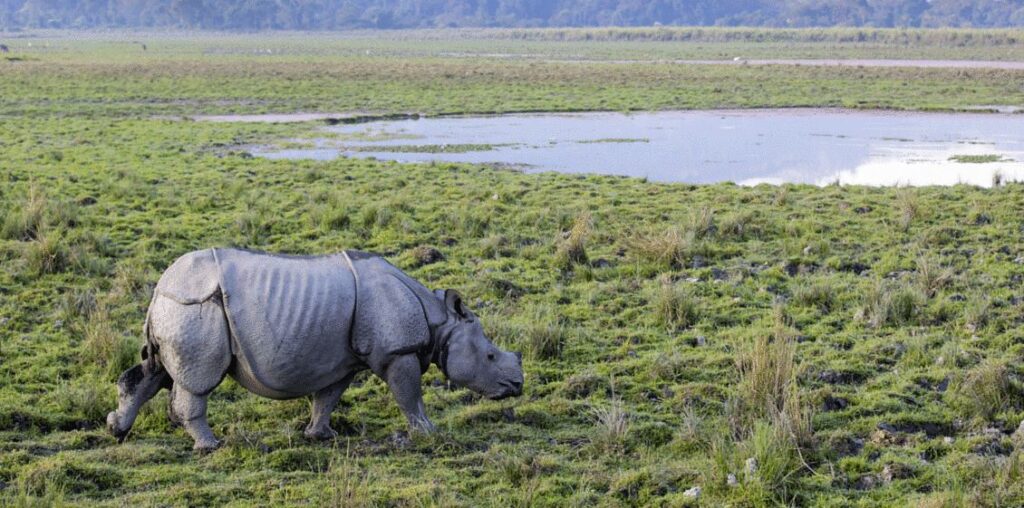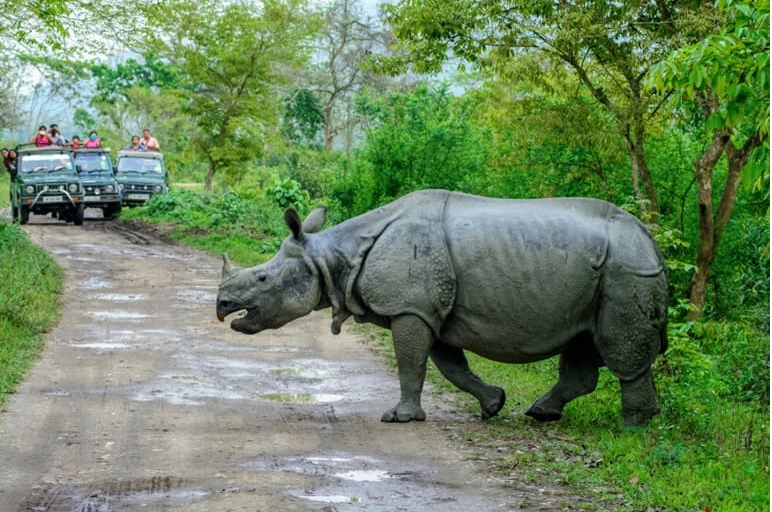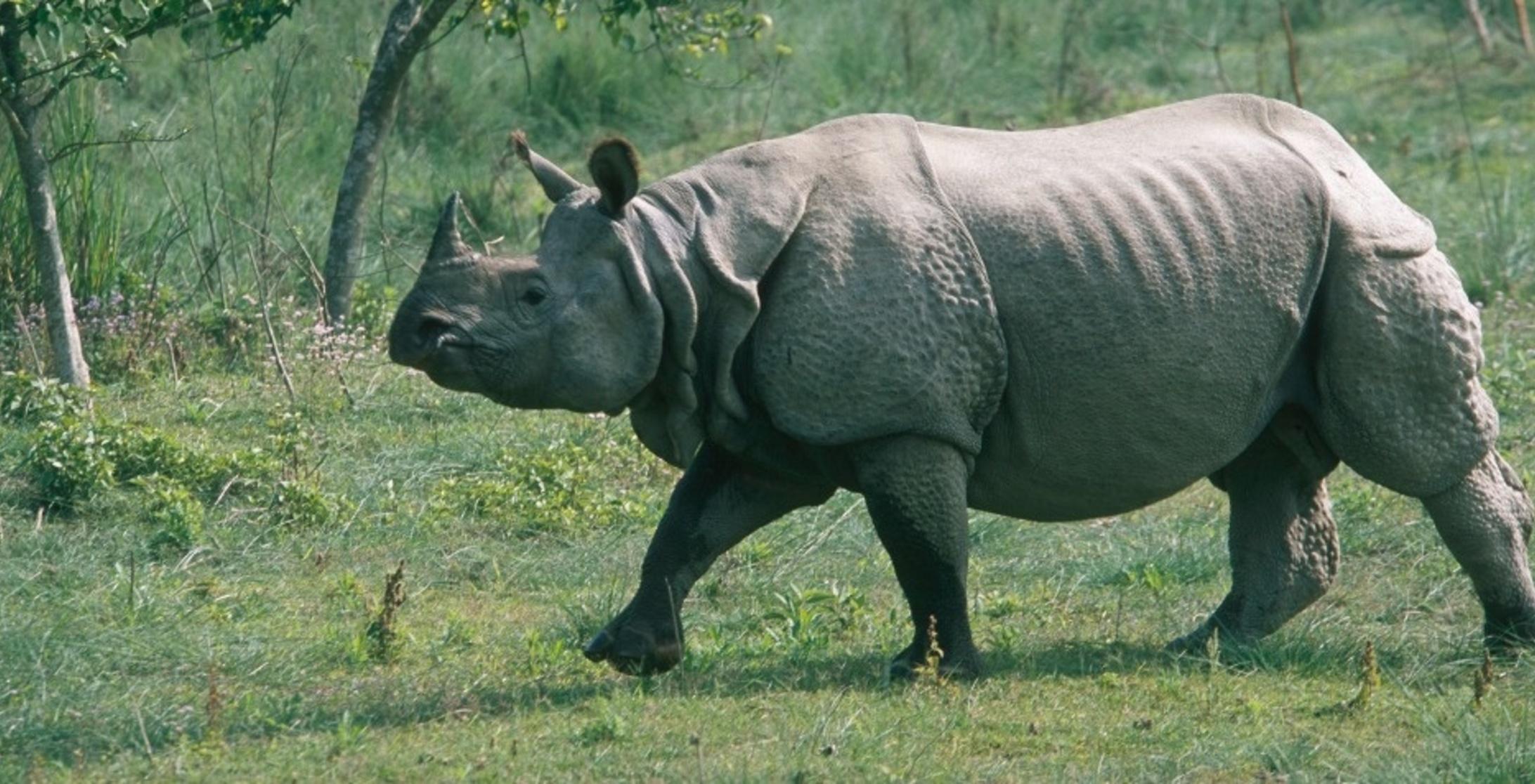
Three Families Celebrate Kaziranga National Park
Designated as a reserved forest in 1950, Kaziranga initially coexisted with a Karbi village. However, in 1954, 11 Karbi families willingly relinquished their forest land within the Central or Kohra range.
Celebrating its 50th anniversary as a national park on February 11, Kaziranga in Assam stands proud as the largest habitat for one-horned rhinoceros and Asian water buffalo in India. However, its journey as a protected forest dates back 116 years. On this special occasion, former forest workers share their memories, reflecting on the family of three pivotal in transforming Kaziranga from a hunting ground to a protected area.

The transformation was initiated with a hunter, Nigna (Bapiram) Hazrika, guiding Lord Curzon and Lady Curzon through Kaziranga’s forest during the British Viceroy’s visit. After the tour, Nigna appealed to Lady Curzon to spare the rhinos from hunting, a plea that brought joy to Lady Curzon, leading to her husband’s endorsement. Consequently, in the same year, Kaziranga earned the designation of a protected area and was recognized as a protected forest area in 1908. Post-independence in 1950, it attained sanctuary status, and on February 11, 1974, it was officially declared a national park. The recognition continued to grow as it received the UNESCO World Heritage Site title in 1985. What once spanned 425 square kilometers has now expanded to 1039 square kilometers, encompassing ten annexed areas. This journey illustrates Kaziranga’s commitment to conservation and its remarkable transformation into a symbol of wildlife preservation.
Lady Curzon documented Nigna Shiki in her diary, a fact worth noting. In 2005, Baron Nicholas Mosley, Curzon’s grandson, visited Kaziranga to welcome Balaram’s grandson. However, despite the completion of fifty years for Udyan, Nigni’s family remained overlooked.
In 1950, Kaziranga attained reserved forest status, but it was home to a Karbi village. The landscape changed in 1954 when 11 Karbi families willingly surrendered their forest land in the Central or Kohra range. Following Sarbar Hanche’s instructions, Khaya Hanche led these families to the Karbi Hills, establishing Karbi village near Tarapung Falls. While 13 villages now thrive in Tarapung, Khaya, the sole surviving member of that journey, resides in Tarpung. Despite their selfless contribution to Kaziranga’s conservation foundation, these pioneers, including Hanchera, have gone unrecognized even after five decades.
Conversely, Mahichandra Miri held the distinction of being Kaziranga’s first Assamese Forester. Joining as Additional Assistant Commissioner during DFO A JW Melroy’s tenure, Miri faced challenges when attempts to use the forest department’s elephants for a survey in the Swapadsankul forest failed due to fear. In a pivotal moment, the skilled and courageous mahout, Musai Miri, presented Ganesha and Krishnaprasad. Despite numerous challenges during their collaboration, these four individuals successfully completed half of Kaziranga’s survey work in 1938. Miri went on to become the first Assamese DFO, but unfortunately succumbed to black fever in 1939. Throughout the 50 years of Kaziranga’s existence, Miri’s family continued to be an integral part of its legacy.


